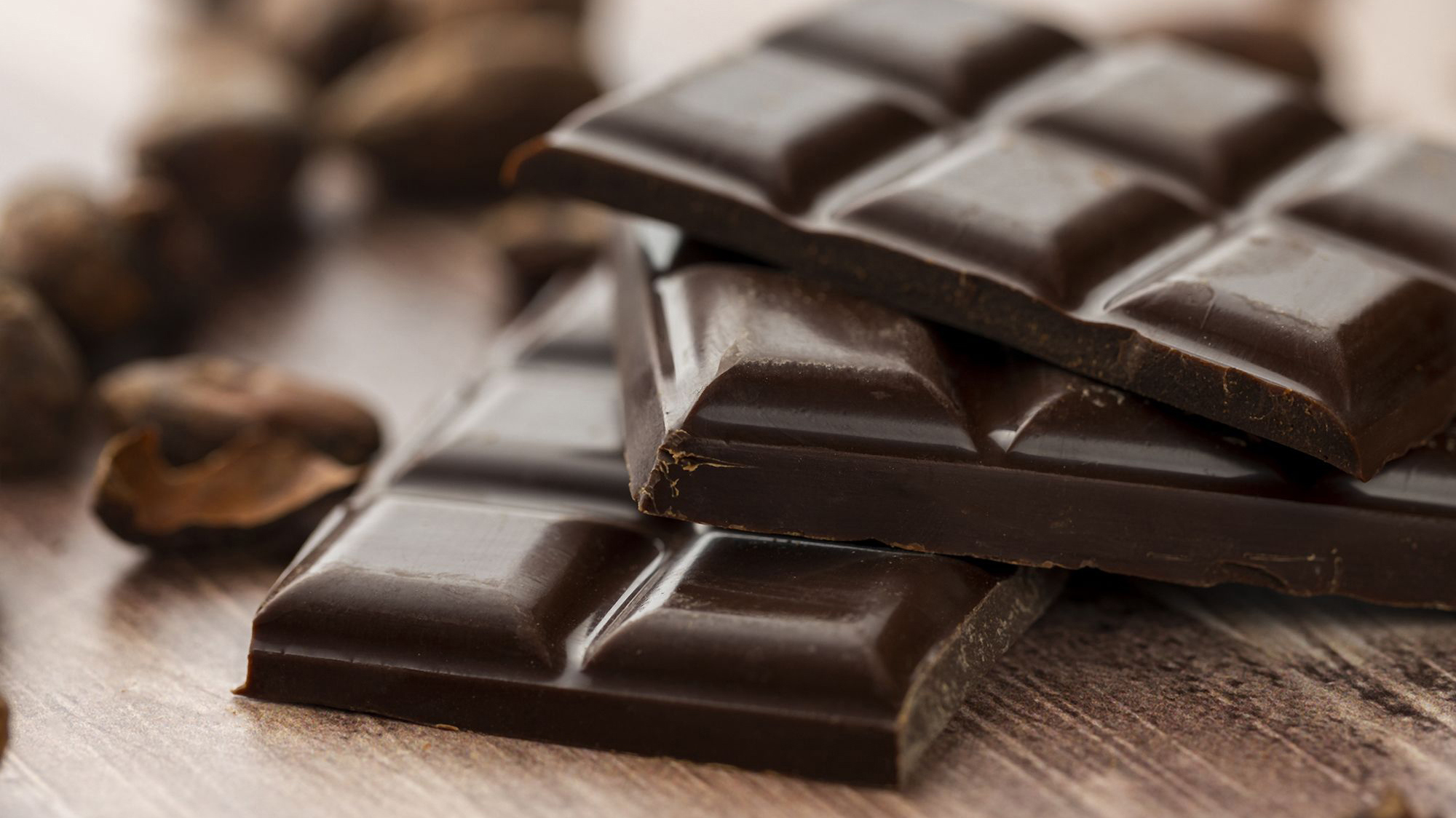
Dark chocolate and similar cocoa products are contaminated with lead and cadmium, two neurotoxic metals that are linked to cancer, chronic disease, or reproductive and developmental issues, especially in children, a new study found.
As natural elements in the Earth’s crust, lead, cadmium and other heavy metals are in the soil in which crops are grown and thus can’t be avoided.
Some crop fields and regions, however, contain more toxic levels than others, partly due to the overuse of metal-containing fertilisers and ongoing industrial pollution.
However, despite growing on land with fewer pesticides and other contaminants, organic versions of dark chocolate had some of the highest levels, according to the study published yesterday in the journal Frontiers in Nutrition.
READ MORE: Trump says Harris ‘happened to turn black’
Dark chocolate is known for being rich in plant nutrients called flavonoids, antioxidants and beneficial minerals and has been linked to improved cardiovascular health, cognitive performance and less chronic inflammation.
The research team examined only pure dark chocolate products as they contain the highest amount of cacao, the raw, unprocessed part of the cacao bean. Candies or baking chocolates with other ingredients were eliminated. The study did not disclose the names or manufacturers of the tested products.
“The average levels of lead and cadmium in cocoa-containing products in the new study are at or above the average amounts the United States Food and Drug Administration finds for lead and cadmium in the most highly contaminated foods they test,” said Jane Houlihan, the national director of science and health for US based Healthy Babies Bright Futures, a coalition of advocates committed to reducing babies’ exposures to neurotoxic chemicals.
Baby food sweet potatoes, baby food teething biscuits, sandwich cookies, white wine and ranch dressing top the FDA’s list of foods most contaminated with lead, while sunflower seeds, spinach, potato chips, leaf lettuce and french fries contain the highest levels of cadmium, Houlihan said.
READ MORE: Find supermarkets chilly? There could be one surprising reason
“If typical health risks from eating chocolate fall below the federal government’s official safe thresholds, it is because people normally eat fairly small amounts,” said Houlihan, who was not involved in the study.
“We’d expect heightened risks for young children, pregnant women, and people who eat chocolate regularly, especially dark chocolate.”
The US National Confectioners Association, which represents the chocolate industry, told CNN via email that “chocolate and cocoa are safe to eat and can be enjoyed as treats as they have been for centuries. Food safety and product quality remain our highest priorities, and we remain dedicated to being transparent and socially responsible.”
Lead and cadmium found, but no arsenic
The new study analysed 72 consumer cocoa products for levels of lead, cadmium and arsenic. Compared with prior studies, which have looked at heavy metals in chocolate during a snapshot of time, the latest study tested the products over an eight-year period, in 2014, 2016, 2018 and 2020.
Testing was done by Consumer Labs, a nonprofit organisation that provides third-party testing on health and nutrition products. It sent samples out to various laboratories to maximise accuracy.
OLYMPIC SCHEDULE: Your day-to-day guide to all the action in Paris, in AEST times
Of the six dozen chocolate products tested over the course of the study, 43 per cent exceeded the maximum allowable dose level for lead as established by Californian law while 35 per cent exceeded the maximum allowable level for cadmium, researchers found. The study found no significant levels of arsenic.
Prop 65 limits are lower than those established by the federal government. The maximum allowable level of lead in children’s sweets is 0.1 parts per million, according to the FDA. California’s Prop 65 sets a safety standard of .05 parts per million for chocolate, about half as much.
Healthy adults who limit their intake to small amounts should not be afraid of eating chocolate, said senior study author Leigh Frame, executive director of the Office of Integrative Medicine and Health at the George Washington University in Washington, DC.
A typical serving of dark chocolate is 28 grams, Frame said.
“But it’s something we need to be aware of in case we are also around other sources of lead exposure, such as lead paint in an old home.”
Should you avoid eating chocolate?
That risk of heavy metal exposure rises, however, if a person is medically comprised, pregnant, or a small child, said Tewodros Godebo, an assistant professor of environmental geochemistry at Tulane University School of Public Health and Tropical Medicine in New Orleans.
He authored a study last month which analysed 155 samples of chocolate and found higher levels of cadmium but little lead in dark chocolates.
MEDAL TALLY: Olympic medal table and full results from every event
Over time, consuming low levels of cadmium can damage the kidneys. The US Environmental Protection Agency calls the metal a probable human carcinogen.
“There are sensitive individuals, medically compromised, such as people with kidney disease who might not be able to efficiently excrete metals out of their body. And of course, a pregnant woman protecting the child in utero would also be at greater risk,” said Godebo, who was not involved in the new study.
Children can absorb about 50 per cent of ingested lead after a meal and up to 100 per cent on an empty stomach, experts say. There is no safe level of lead, especially for children, according to the World Health Organisation.
“In particular, lead can affect children’s brain development, resulting in reduced intelligence quotient (IQ), behavioural changes such as reduced attention span and increased antisocial behaviour, and reduced educational attainment,” WHO says on its website.
However, for healthy adults, Godebo’s risk analysis found little to worry about choosing to indulge in 28 grams of dark chocolate now and again.
“Of course, we want close to zero exposure, but that’s impossible,” he said. “Everything we eat likely contains some level of these contaminants. But it is a relative risk.”
Watch every moment, every medal of the Olympic Games Paris 2024 live and free on Channel 9 and 9Now. Plus, every event ad-free and in 4K on Stan Sport.
links to content on ABC
9News





